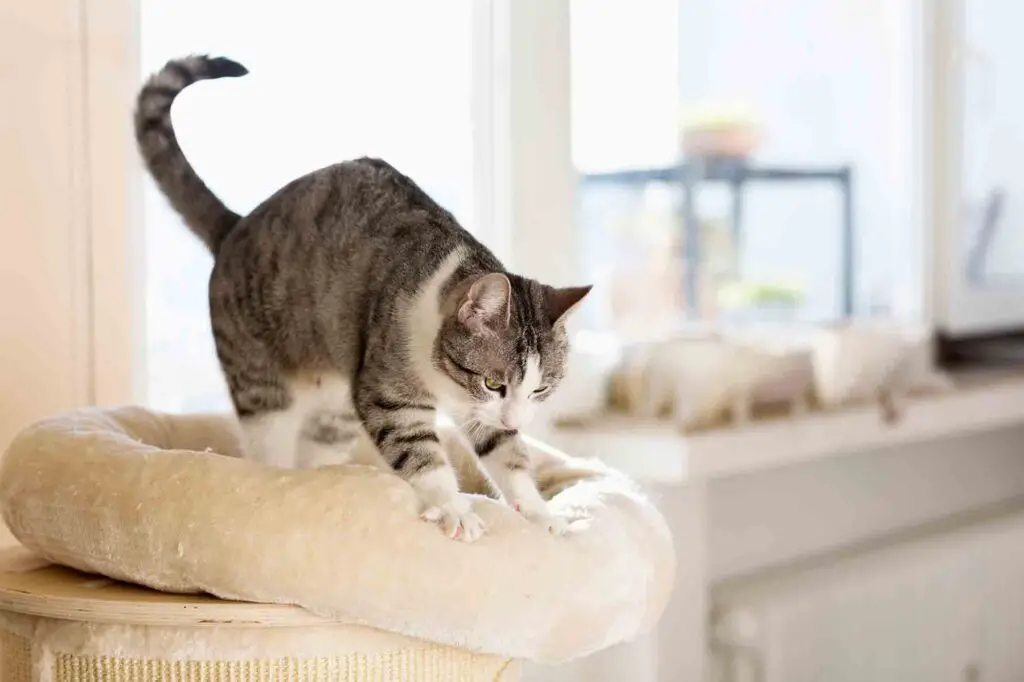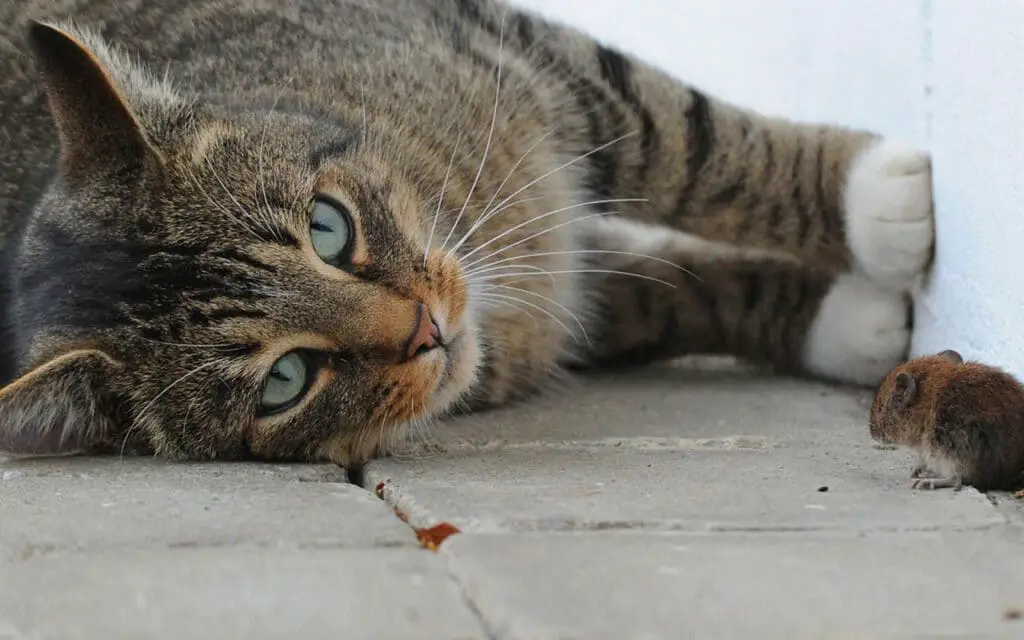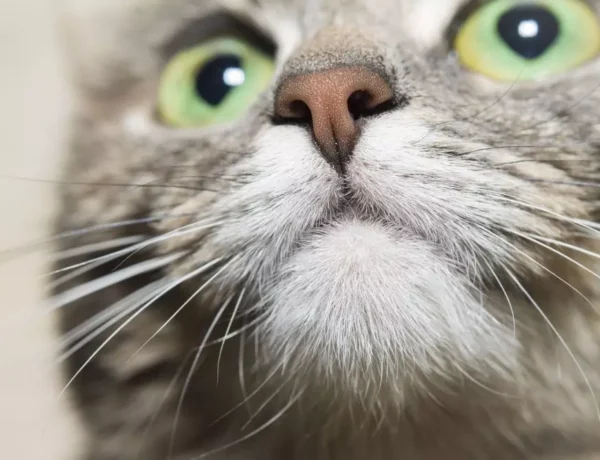Introduction
How To Get A Cat To Trust You: Building trust with a cat is a delicate and rewarding endeavor that requires patience, understanding, and a genuine appreciation for feline behavior. Unlike dogs, cats tend to be more reserved and independent, which makes earning their trust a unique and often nuanced process. Whether you’ve just brought a new cat into your home or are seeking to strengthen the bond with an existing feline companion, learning the art of gaining a cat’s trust is a journey that can lead to a deeper, more meaningful connection. In this guide, we will explore a variety of techniques and strategies to help you establish a foundation of trust with your cat, allowing you to create a harmonious and fulfilling relationship built on mutual respect and companionship. Cats with their enigmatic and independent nature, have captured the fascination of humans for centuries. While dogs often wear their emotions on their sleeves, earning the trust of a cat involves navigating a more subtle and intricate path. Forming a bond with a cat is a rewarding endeavor that requires time, sensitivity, and a deep understanding of feline behavior.
Whether you’re welcoming a new furry friend into your home or aiming to deepen your connection with a long-time companion, the journey of gaining a colors cats trust is a voyage of patience and mutual understanding. Cats have a unique way of communicating, expressing affection, and setting boundaries. Unlike the exuberant wagging tails of dogs, a cat’s trust must be cultivated through a dance of observation, empathy, and respect for their individuality. Each feline possesses its own personality, history, and preferences, making the process of building trust as diverse as the cats themselves. In this comprehensive guide, we will delve into a plethora of techniques designed to bridge the gap between human and feline worlds. From deciphering the subtle language of tail flicks and ear twitches to creating environments that foster comfort and security, every step on this journey brings you closer to understanding the intricate tapestry of a cat’s emotions.
As you embark on this venture to earn a cat’s trust, remember that it’s a two-way street. Just as you aim to unravel the mysteries of your cat’s heart, they too are deciphering your intentions, actions, and energy. With the right blend of patience, kindness, and respect, you can lay the foundation for a bond that goes beyond mere companionship. The moments when a once-wary cat nuzzles your hand or curls up in your lap are the sweet rewards of your dedication to understanding and cherishing these enigmatic creatures. So, whether you’re a first-time cat owner or a seasoned cat enthusiast, let’s explore the multifaceted world of feline trust-building together. By delving into their world and learning the art of patience, we can unlock the doors to a relationship that’s built on trust, mutual admiration, and a shared love for the intricate dance of human-cat companionship.

How long does it take for a cat to trust you?
Whether a kitten is in the shelter system or born into a feral colony, their experience during this stage will play a huge role in how long it takes to trust new humans or environments. Depending on their upbringing, it may take days, weeks, or months for a newly-befriended cat to trust you.
Personality and Past Experiences: Just like humans, cats have distinct personalities shaped by their past experiences. A cat that has had positive interactions with humans from a young age might be more open to trust new people. However, a cat that has had negative experiences or limited socialization may take longer to overcome their wariness.
Age: Kittens generally tend to adapt and form bonds more quickly compared to adult cats. Kittens are in their critical socialization period up to around 7-14 weeks of age, during which they are more open to forming attachments to humans and other animals. Adult cats, on the other hand, might need more time to adjust, especially if they are transitioning from a different home or environment.
Environment: The surroundings in which you and the cat interact play a significant role in the trust-building process. If the cat feels safe and secure in its environment, it’s more likely to explore and engage with you. A calm and quiet environment can promote a positive atmosphere for trust to develop.
Do cats forgive easily?
The good news is, despite their reputations for being antisocial, cats love bonding and they do forgive and forget. So, if you’re at a loss as to how you’re going to rebuild trust and affection with your cat, don’t fret.
Limited Grudge-Holding: Cats have shorter memories than humans, and they don’t hold grudges in the same way. If a cat reacts negatively to a particular situation, it’s often a response to the current circumstances rather than a lingering resentment from the past. This can sometimes be mistaken for a lack of forgiveness.
Sensitive to Environment: Cats are highly sensitive to their environment and the people around them. If they have a negative experience or association with a particular person, place, or event, they might exhibit avoidance behavior. This isn’t so much about holding a grudge as it is about self-preservation.
Rebuilding Trust: While cats might not forgive in the human sense, they can rebuild trust with time and positive experiences. If a cat had a negative encounter with someone, that person can work to create positive interactions by offering treats, engaging in play, and respecting the cat’s boundaries.
Can I trust my cat alone?
Leaving your cat at home while you are away for a short amount of time shouldn’t be a problem because most cats love their independence. However, if you’re expecting to go away for a longer period of time, such as a mini break or a holiday, ensure that you plan ahead to make sure your cat is as comfortable as possible.
Breed and Personality: While cats, in general, have an independent streak, individual personalities and breed characteristics can influence how well a cat tolerates being alone. Some cat breeds, like the Siamese or Ragdoll, are known to be more social and may not do well when left alone for extended periods. Similarly, a cat’s temperament, whether shy or outgoing, can also impact their comfort level when left alone.
Duration: The length of time you plan to leave your cat alone plays a significant role. Most cats can manage short periods alone, such as during a workday. However, leaving them alone for several days can lead to issues related to food, water, and litter box maintenance.
Environmental Enrichment: Cats can get bored easily, which might lead to destructive behavior or stress-related issues. Providing environmental enrichment, such as interactive toys, scratching posts, and window views, can help alleviate boredom and keep your cat engaged.
Do cats like kisses?
It really depends on the individual cat. Some cats do not mind kisses, while others do. Similarly, some cats simply learn to tolerate kisses from their owners, but this does not necessarily mean they enjoy them.
Cats communicate through a combination of body language, vocalizations, and behaviors. While dogs might be more receptive to physical displays of affection like hugs and kisses, cats have distinct preferences that are rooted in their natural instincts. It’s important to recognize and respect these signals to ensure a positive and comfortable relationship with your cat.
Head Bumps and Rubs: Cats often express affection by nuzzling or rubbing their heads against you. This behavior is known as “head bunting” and is akin to a feline hug. It’s a sign of trust and camaraderie, and many cats find this physical contact enjoyable.
Slow Blinking: When a cat gives you a slow, deliberate blink, it’s a gesture of trust and affection. Responding with a slow blink of your own can strengthen your bond with your cat.
Purring: Purring is one of the most recognizable signs of a content and relaxed cat. While it doesn’t necessarily mean your cat enjoys kisses, it indicates they’re in a good mood and receptive to affection.
What do cats want?
Cats love a stimulating environment.
Cats need a variety of toys, including those they can play with on their own (for while you’re at work) and those that you can use to play with them. And a window perch is a great place for your kitty to nap or watch birds and squirrels.
Comfort and Security
Cats seek a safe and comfortable environment where they can relax without feeling threatened. Providing cozy beds, quiet hiding spots, and elevated perches allows them to observe their surroundings and retreat when they desire solitude. A sense of security fosters trust and a positive relationship.
Nutrition and Hydration
High-quality nutrition is paramount to a cat’s well-being. Offering a balanced and appropriate diet that meets their specific dietary needs helps maintain their health and energy levels. Fresh water is equally crucial, as cats are known for being meticulous about their hydration.
Stimulation and Enrichment
Cats have an innate curiosity and a need for mental stimulation. Interactive toys, puzzle feeders, scratching posts, and climbing structures engage their natural hunting and exploring instincts. Regular playtime and enrichment activities prevent boredom and encourage healthy mental development.
Should I pet my shy cat?
Be careful while playing, and always respect their boundaries when it comes to petting (they’ll let you know). Your shy cat will reward you throughout the process every time they work up the courage to join you in the other room, rub your leg or let you pet them!
Observe and Respect Boundaries
Shy cats often have boundaries when it comes to physical touch and social interaction. They may exhibit behaviors like hiding, avoiding eye contact, or retreating when approached. It’s crucial to observe these cues and respect their need for space. Forcing physical contact can lead to increased anxiety and may damage the trust you’re trying to establish.
Creating a Safe Environment
Creating a safe and stress-free environment is the first step in nurturing a shy cat’s confidence. Provide hiding spots, elevated perches, and quiet spaces where they can retreat when they feel overwhelmed. Gradually introducing new people and experiences can help your cat build trust at their own pace.
Slow and Gradual Approach
If your shy cat shows interest in being near you, it’s important to approach them slowly and calmly. Allow them to initiate contact by sniffing your hand or rubbing against you. Offer a relaxed hand for them to investigate and give them the freedom to walk away if they choose.
Why is my cat scared of me?
Shy cats may have lacked exposure to different people when they were kittens, especially between the ages of 2 to 7 weeks. Cats who have been exposed to different types of people may still feel afraid of certain kinds of people they haven’t come across often, such as children.
Past Trauma or Negative Experiences
Cats have long memories and can be deeply affected by negative experiences. If your cat had a traumatic encounter in the past, such as rough handling, loud noises, or even a frightening incident with another person or animal, they might associate that fear with humans, including you.
Lack of Early Socialization
Kittens that aren’t properly socialized during their critical developmental period (usually between 2 to 9 weeks of age) can develop fear or aggression towards humans. If your cat didn’t have positive interactions with humans during this time, they might struggle with trust and confidence later in life.
Sudden Changes or Events
Cats are sensitive creatures that thrive on routine and predictability. Sudden changes in their environment, such as moving to a new home, introduction of new family members or pets, or a change in daily routine, can trigger fear and anxiety.
Can you hurt a cat’s feelings?
Famously independent, sometimes falsely assumed to be immune to feelings, cats are in truth super-sensitive to emotions, sound, and stress. Perhaps because felines lack the eager-to-please openness of their canine colleagues, humans overlook the big and small ways they can break a cat’s spirit.
Lack of Attention or Interaction
Cats thrive on social interaction and companionship. A lack of attention or neglect can lead to feelings of loneliness or boredom, which might result in behavioral changes or signs of distress.
Sudden Changes in Routine or Environment
Cats are creatures of habit, and sudden changes in their routine or environment can cause stress and anxiety. Moving to a new home, introducing a new pet, or rearranging furniture can all impact a cat’s emotional state.
Loud Noises and Frightening Experiences
Cats are sensitive to loud noises and sudden movements. Frightening experiences, like being exposed to loud thunderstorms or aggressive interactions, can lead to fear and stress.

Conclusion
Earning a cat’s trust is a journey that unfolds gradually, much like the delicate opening of a flower’s petals. Throughout this guide, we’ve explored the intricate art of building a strong and meaningful bond with these independent and captivating creatures. From decoding their subtle body language to creating a secure and welcoming environment, each step you take brings you closer to the heart of your feline friend. Remember, patience is your greatest ally on this journey. Just as a cat’s trust isn’t won overnight, the rewards of your efforts might not always be immediate. But the small victories – the tentative purrs, the gentle headbutts, the moments of vulnerability – are the treasures that make this endeavor so worthwhile. As you work to gain your cat’s trust, keep in mind that every cat is an individual with its own quirks and preferences. Flexibility and adaptability are essential qualities as you navigate the path to companionship. Approach them with the respect and empathy they deserve, and in return, they’ll offer you a glimpse into their world, often reserved for the privileged few.
The journey to gaining a cat’s trust is not just about forging a connection with a four-legged friend; it’s a journey that can teach you patience, empathy, and the power of non-verbal communication. By investing time, love, and understanding, you’re sowing the seeds for a relationship that can enrich both your lives in ways you might never have imagined. So, as you continue on this heartwarming adventure of trust-building with your feline companion, embrace the moments of progress and celebrate the milestones you achieve together. With time, dedication, and an open heart, you’ll find that the trust you’ve worked so hard to cultivate is the foundation of a bond that can last a lifetime. n the realm of feline companionship, the journey to earning a cat’s trust is an intricate dance of patience, perseverance, and understanding. As you’ve delved into the art of building this special connection, you’ve discovered that every flick of a tail, every tentative approach, and every shared moment holds significance in the grand tapestry of trust.
Your dedication to learning the nuances of cat behavior has opened doors to a deeper level of companionship. The moments when your once-reserved cat curls up in your lap or exposes their belly for a gentle rub are not just signs of trust, but also symbols of the connection you’ve nurtured through your commitment. As you continue to forge ahead, keep in mind that trust is a two-way street. Just as you’ve sought to understand your cat’s world, they too have been observing, assessing, and gradually extending their paw of trust toward you. The journey doesn’t end here; rather, it transforms into a lifelong voyage of shared experiences and mutual respect. In the end, the journey to gaining a cat’s trust is a testament to the beauty of patience and the magic of forming connections across species boundaries. By approaching your feline companion with an open heart and a willingness to meet them on their terms, you’re not only building trust but also fostering a relationship that brings immeasurable joy and enrichment to both of your lives.





No Comments